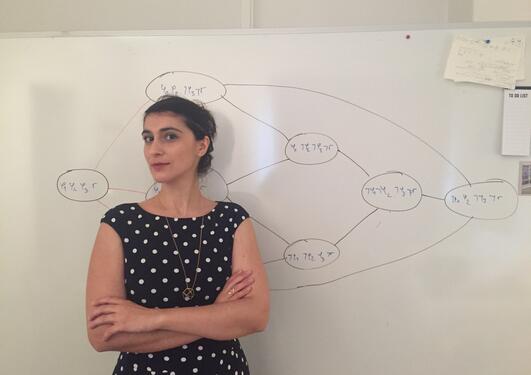Can our digital performance be understood by a theoretical formula? Marija Slavkovik hopes to find the answer.
The rule of building a perfect algorithm translates to a common experience of the real world: If you want something to be beautiful, it must handle complexity.

Main content
As users of social media, we act and appear as a digital crowd. By using the same electronic platforms to retrieve information and express our views, we share the same digital experience.
In front of the screens, reading news and taking part in discussions, we are all a part of the digital crowd. By our mere use of social media - and by expressing hearts, thumbs and smiling faces, we are contributing to the formation of a public opinion.
At the same time, the underlying algorithms that shapes our aggregated content are also being created. This is the core problem of the research of Marija Slavkovik.
“The main objective of my research project is to provide us with a better understanding of how public opinion is formed”, Marija Slavkovik says. She is an associated professor at the Department of Information Science and Media Studies at the University of Bergen.
The creation of public opinion
She is currently planning an extensive research project on understanding the algorithms behind the process of how public opinion online is being shaped.
Slavkovik aims for a better understanding of how digital information changes in different settings.
“We have to make it tangible what the aggregation of this theoretical information actually means. This is the end goal”, Slavkovik says.
By building a model, the researchers will enhance their understanding of the process.
“It will not be simple. This is the eternal computation problem: The more data you put in, the harder it will be to make a good calculation. In order to make a beautiful formula, we must ensure that it can handle complexity,” she says.
From human language to unambigous formula
Defining the input and the predicted output is at the core of Slavkovik’s objective.
“I want to know how a channel or a platform changes information”, she says.
Slavkovik and her colleagues want to build a mathematical formula that may help researchers understand the mechanisms that govern how public opinion is shaped. When trying to build their algorithms, the human language must be translated into an unambiguous, mathematical formula.
The virtual village of good people
Through her academic career, Marija Slavkovik has worked in seven different countries. During her years abroad, she has gained a vast network of collaborators – researchers who share her love for algorithms, artificial intelligence and machine ethics. In her future projects, she will draw on their bright ideas and extensive expertise.
“We are part of communities in a way, organized around our topics of interest. I have my own virtual village comprised of people with whom I share the same academic interests. We work together, we meet at conferences, we publish in the same journals”, she says.
Along with her village, she is determined to see the research project through.
“I will conduct this research. A thorough and fundamental understanding of what shapes public opinion is something that I will have to pursue”, she says.
Her work may pave the way for profound changes in the way digital information is structured. But the changes are to be made by others.
“I am doing basic research. That means that I am only stocking the pantry for others to cook.”
